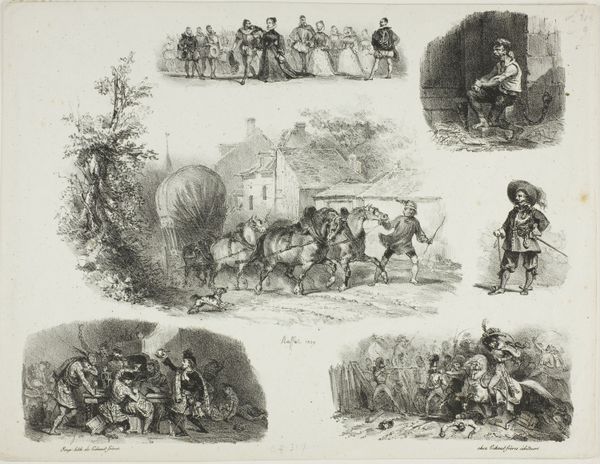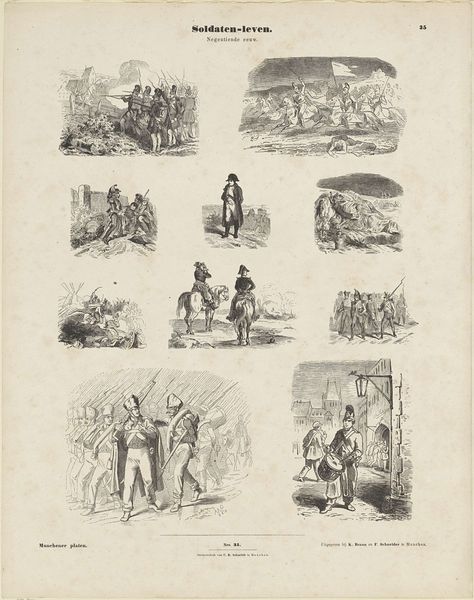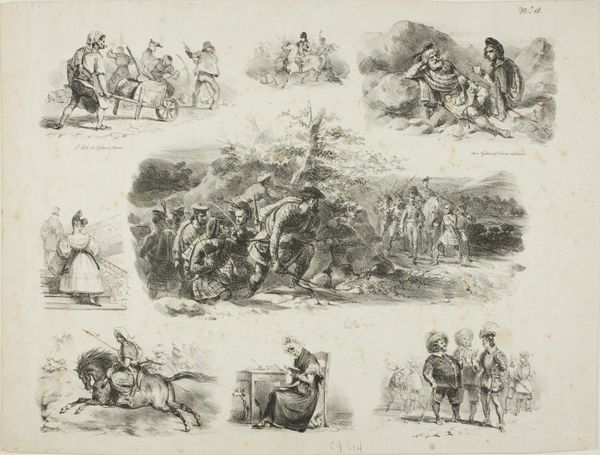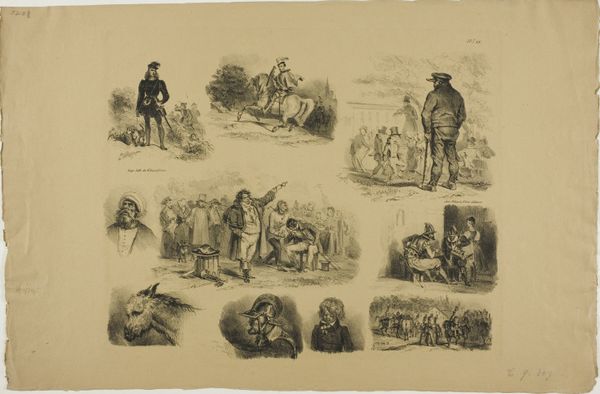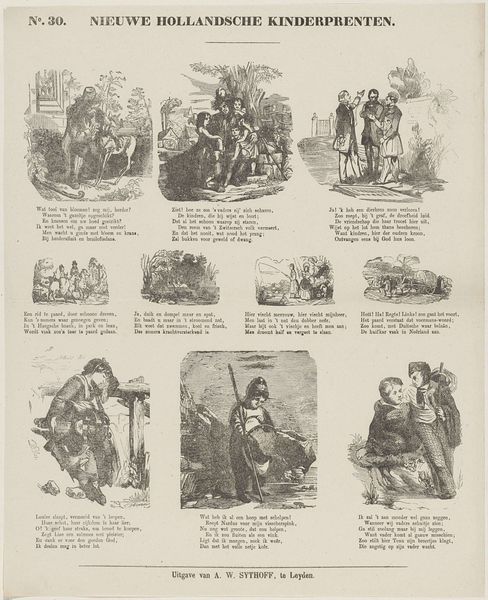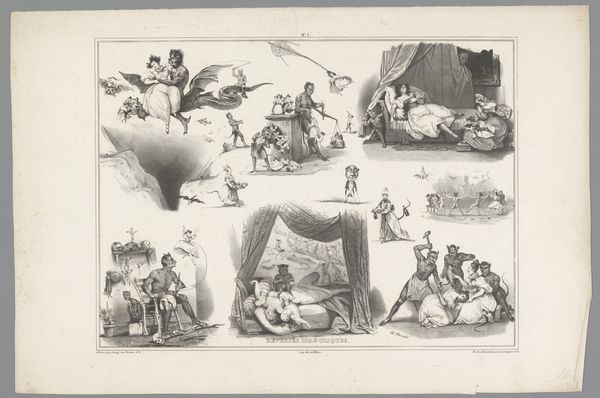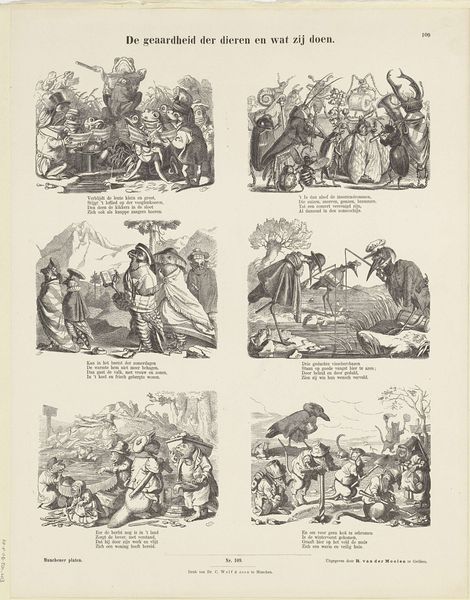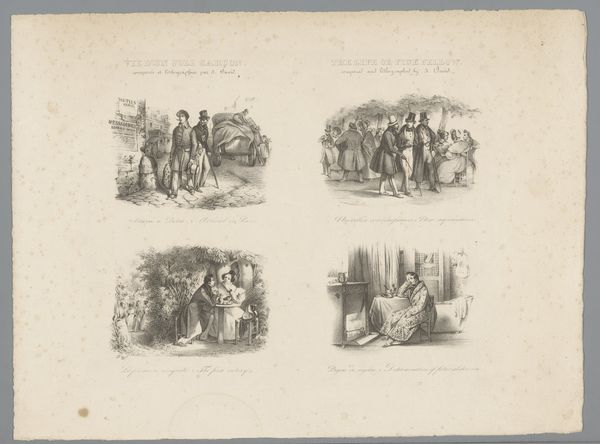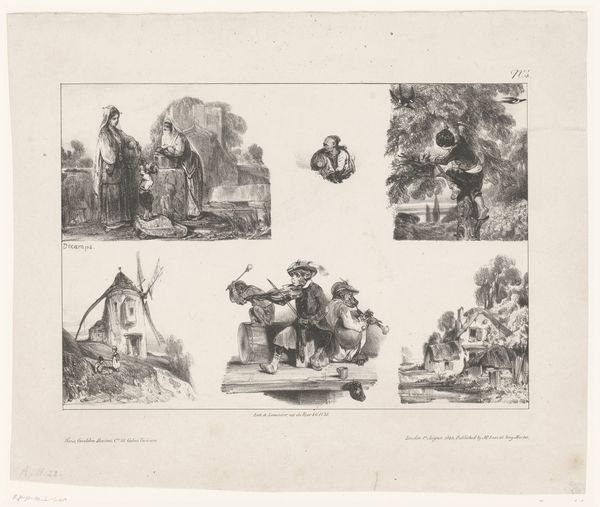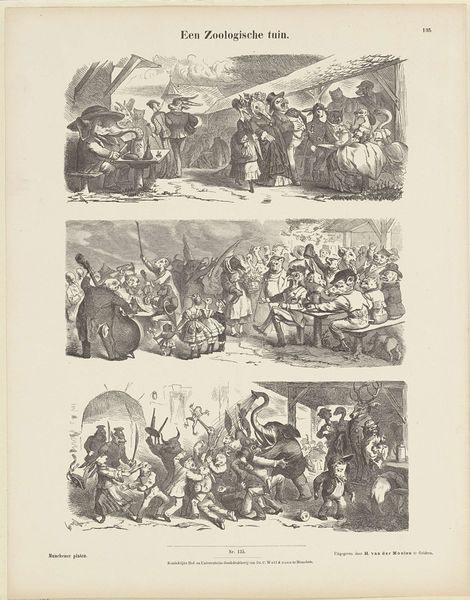
drawing, lithograph, print, paper
#
drawing
#
narrative-art
#
lithograph
# print
#
paper
#
romanticism
#
france
#
genre-painting
Dimensions: 236 × 295 mm (image); 267 × 349 mm (sheet)
Copyright: Public Domain
Editor: So, this is "Sheet of Sketches" by Auguste Raffet, created in 1829. It’s a lithograph on paper, currently at the Art Institute of Chicago. It looks like a collection of scenes, almost like comic panels. How do you interpret this work, considering the materials and the social context of its production? Curator: Well, given Raffet’s technique as a lithographer, we have to consider the implications of mass production here. This isn’t some singular masterpiece emerging from a solitary genius. Instead, we have a reproducible image intended for circulation, likely reaching a broader audience than traditional paintings. Think about the socio-political climate in France at that time. How does this affect how we see these scenes? Editor: I hadn't thought about the lithographic process making it more accessible. So, are you suggesting that the narrative in these scenes, like the military one, could reflect contemporary political concerns accessible to the masses? Curator: Precisely. And it's not just the elite experiencing these depictions. The method matters. Lithography facilitates wider access. Consider, too, how Raffet depicts labor, not directly maybe, but the products of labor, the societal structures that necessitate these vignettes. Do you see a commentary on the rising bourgeoisie embedded here? Editor: I see that now! And the scenes do seem to depict the everyday life of different social classes... the hunter, the soldiers, the river travelers. I guess the "high art" versus "craft" boundary gets blurry with prints like this, because they are produced in multiples, like functional objects. Curator: Exactly. The material, lithographic stone, the means of production, printing presses – these inform the meaning as much as the imagery. And let's not forget consumption. Who would buy these? Why? Understanding that helps us unlock its purpose. Editor: This definitely gives me a lot to think about, looking beyond just the visual stories. I appreciate seeing how the production and distribution are part of the message too. Curator: Indeed. Seeing art through a material lens really transforms our understanding, doesn’t it? It challenges us to think about the hands, processes, and the world that made it possible.
Comments
No comments
Be the first to comment and join the conversation on the ultimate creative platform.

